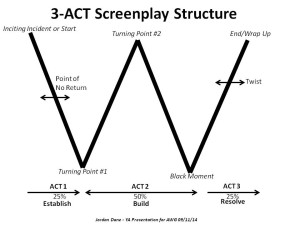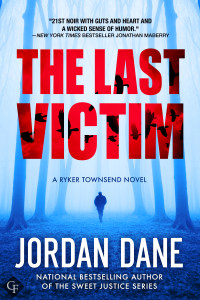A story has been niggling my brain for the past week. It tickles, in a good way. It started out as a vague melange of unconnected notions (like walking down a dark tunnel) until I started to define a premise and narrow the focus as if I had a light to guide me. Through online research of headline type tragedies, I searched for something with punch that would push me into the almost uncomfortable zone. I developed a loose character profile, playing with gender for the main character, but I needed more.
Over the last two days, I’ve refined my ideas about the story and “fleshed it out” in a way that excites me the most. I can’t share my book idea yet, but I’ve made notes of my process to share here at TKZ. Here are my steps going forward.
1.) Imagine basic ‘what ifs” about a potential character (a storyteller) and a problem–an unfathomable tragedy, an emotionally charged story concept, or a compelling situation–to create a list of “what if” scenarios. One story idea can have many “what ifs.” In SILENCE OF THE LAMBS, another “what if” could center on Hannibal or Crawford who risks his career and reputation on an FBI trainee. Brainstorm a list before you narrow it down to the one you want to develop as the foundation starting point to your story.
2.) Next, whose story will it be? Let’s talk character. Who has the most to lose? Pick the best character(s) to tell the story. Then decide how you want to “punish” them to test their worthiness for a starring role in your book.
3.) What is the external conflict between the main players (villain or adversary included)? But a good story is not only about the obvious conflict. Flawed characters have double the challenges. How will their internal crutches (their inherent weaknesses) keep them from getting what they want & add to the stress of the conflict? Make the story a personal and intimate journey.
4.) What’s at stake & how will the stakes escalate and play out? Maximize the emotional impact by ramping up the conflict between two main players at odds with each other. Yes, they could be on the same side, but pit them against each other to make things progressively worse and see how they’ll make it through.
5.) Now draft your “pitch” or a premise. You have your basic story ideas – your cast of characters, the conflict, the escalating stakes and a general sense of how things will play out, so you’re ready to draft a “pitch” or develop a premise that best fits your story. Something that would make an agent, editor, or reader say, “Wow, I have to read that.”
Here’s a basic premise example for SILENCE OF THE LAMBS:
A young female FBI trainee must barter her intimate secrets with an infamous psychopath held in solitary confinement to gain his help in catching a serial killer who’s killing women for their skins.
Notice there’s a well-defined protagonist, a formidable antagonist, a sense of the setting, conflict and stakes, and a notion of how the action will play out. The protagonist is up against forces that seem much bigger than she is. The stakes are high. If she fails, more women die. A premise works best when it’s about a vulnerable character with a formidable problem that would seem compelling to the reader.
A good premise should:
- Be concise
- Be evocative
- Be framed from a “what if” question
- Be written in present tense with an easily understood sentence structure that makes the story seem familiar yet with a hook or difference to stand out from other books.
- It should contain a character, a conflict, and a hook.
- It should have universal appeal
- Be limited in word count (maybe up to 35 words or less, or 2-3 concise sentences)
- The core story should be centered on an idea that jumps out at anyone.
A word of caution:
Do not overload the story with too many focal points or subplots that take away or distract from the main character(s) plight. Keep a laser focus. If the premise is compelling enough, the story won’t need embellishment.
From this point forward: Now that I’ve developed a more focused idea for a new book, I will draft a general plot using a method that’s worked for me and one that I’ve blogged about before at TKZ: The Author’s Bucket List on Plotting Structure. Using the shape of a “W” to remind me, I’ll create the inciting incident, the point of no return, turning points, the black moment, and the twisty wrap up in 7 points that will get me started. A high level outline. Since I’m an impatient writer, I usually start to write the beginning to play with what will work best. If I’m writing on proposal, I will draft a 5-7 page synopsis to go along with the writing sample to a publisher. I like having a fuller synopsis, than merely my 7 point “W’ outline, to develop the story line in a way that guides me as I write. I can incorporate character motivation and ramp up the conflict in such a synopsis so I don’t forget any necessary plot points. At this point, I am on my way and writing in the zone.
Here is a visual idea of the “W” plotting I use: It a visual summary of my blog post.

DISCUSSION EXERCISE: Write a brief yet effective premise for any of these 5 well- known movies:
1.) Silence of the Lambs (Can you do one from Hannibal’s perspective?}
2.) Jaws
3.) It’s a Wonderful Life
4.) Hunger Games
5.) Wizard of Oz
 The Last Victim coming Oct 30, 2015 in print and ebook. Available for ebook preorder through Amazon Kindle at a discounted price.
The Last Victim coming Oct 30, 2015 in print and ebook. Available for ebook preorder through Amazon Kindle at a discounted price.
Enter Goodreads GIVEAWAY at this LINK. Win one of 15 signed print copies See rules and enter.

